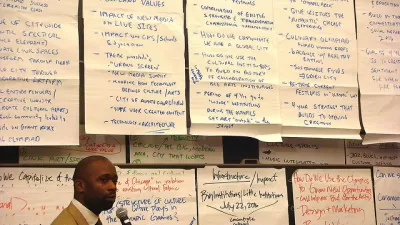The movement stems from demographic changes in the work force. For companies seeking younger hires, they need to go to where they prefer to live. Suburban campuses may be replaced by urban headquarters or the addition of satellite offices in cities.

Lauren Weber points to many "corporate giants abandoning vast suburban campuses for urban offices nearer to the young, educated and hyper-connected workers who will lead their businesses into the digital age." While her focus is the Chicago area, she includes examples from throughout the country.
"The showcase headquarters of the past, the beautiful suburban campuses—that's a very obsolete model now," said Patrick Phillips, CEO of the Urban Land Institute, a land-use think tank.
Vacancy rates reflect the "back to the city" movement. In 2013, 13,9% of urban space stood empty compared with 18.5% in suburbs.
"There's increasing evidence that this represents a broad trend among large and middle-size companies," said Enrico Moretti, an economist at the University of California, Berkeley, and author of "The New Geography of Jobs."
For companies who choose to say put, many "are opening or expanding urban satellite offices, especially for technology and research staff working on product development and innovation, according to Mr. Moretti."
Lauren Weber goes into more detail in an audio version of the article with host Gordon Deal of "The Wall Street Journal This Morning" accessible from the article.
The same article also appears in Yahoo! Finance.
FULL STORY: Companies Say Goodbye to the 'Burbs

Planetizen Federal Action Tracker
A weekly monitor of how Trump’s orders and actions are impacting planners and planning in America.

San Francisco's School District Spent $105M To Build Affordable Housing for Teachers — And That's Just the Beginning
SFUSD joins a growing list of school districts using their land holdings to address housing affordability challenges faced by their own employees.

The Tiny, Adorable $7,000 Car Turning Japan Onto EVs
The single seat Mibot charges from a regular plug as quickly as an iPad, and is about half the price of an average EV.

With Protected Lanes, 460% More People Commute by Bike
For those needing more ammo, more data proving what we already knew is here.

In More Metros Than You’d Think, Suburbs are Now More Expensive Than the City
If you're moving to the burbs to save on square footage, data shows you should think again.

The States Losing Rural Delivery Rooms at an Alarming Pace
In some states, as few as 9% of rural hospitals still deliver babies. As a result, rising pre-term births, no adequate pre-term care and "harrowing" close calls are a growing reality.
Urban Design for Planners 1: Software Tools
This six-course series explores essential urban design concepts using open source software and equips planners with the tools they need to participate fully in the urban design process.
Planning for Universal Design
Learn the tools for implementing Universal Design in planning regulations.
Smith Gee Studio
City of Charlotte
City of Camden Redevelopment Agency
City of Astoria
Transportation Research & Education Center (TREC) at Portland State University
US High Speed Rail Association
City of Camden Redevelopment Agency
Municipality of Princeton (NJ)





























